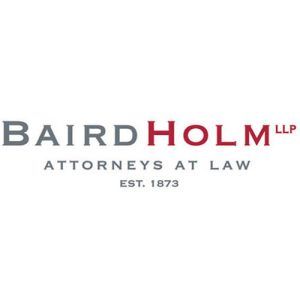Qualification as an S corporation may be critical to achieving a business’ tax objectives; however, the S corporation rules contain many traps for the unwary. In particular, S corporations may inadvertently invalidate or terminate their S elections. Qualified subchapter S subsidiaries, or QSubs, may face similar issues.
Section 1362(f) of the Internal Revenue Code provides relief for inadvertently invalid S elections, QSub elections, and terminations under certain circumstances; however, to actually obtain relief, a taxpayer may need to submit a private letter ruling (PLR) to the Internal Revenue Service (IRS), which can be an expensive and time-consuming process.
The IRS has provided simplified procedures for taxpayers to obtain relief for noncompliance with the S corporation and QSub rules in Rev. Proc. 2022-19, which allows for retroactive corrective relief for inadvertently invalid and terminated S elections and QSub elections under certain circumstances, without requiring taxpayers to obtain a PLR.
A. S Corporation & QSub Overview
An “S corporation” is a small business corporation with a valid S election in effect. A “small business corporation” is a domestic corporation that is not an “ineligible corporation” (as defined in Section 1361(b)(2)) and that does not have: (A) more than 100 shareholders; (B) as a shareholder, a person (other than an estate, a trust described in
Section 1362(c)(2), or an organization described in Section 1361(c)(6)) who is not an individual; (C) a nonresident alien as a shareholder; or, (D) more than one class of stock.
An S corporation must timely file Form 2553, Election by a Small Business Corporation, to make an S election. An entity that does not qualify as a small business corporation pursuant to the requirements above cannot make a valid S election.
A QSub is a domestic corporation that is not an ineligible corporation and is 100% owned by an S corporation, and which has a valid QSub election in place. The parent S corporation must timely file Form 8869, Qualified Subchapter S Subsidiary Election, to make a QSub election for an eligible subsidiary. A valid QSub election cannot be made for an ineligible subsidiary.
A business with a valid S election may have such status inadvertently terminated by ceasing to continually qualify as a small business corporation. Similarly, an eligible subsidiary with a valid QSub election may have such status inadvertently terminated if its parent’s S election terminates or if the subsidiary ceases to qualify as a QSub.
B. Overview of Relief Under Section 1362(f)
Section 1362(f) provides if an S election or QSub election is not effective by reason of the failure of the electing entity to satisfy the applicable requirements or to obtain the shareholder consents required for a valid election, or if such election is terminated, then, notwithstanding the circumstances resulting in such ineffective election or termination, the entity will be treated as an S corporation or QSub, as applicable, during the period specified by the Secretary of the Treasury, if three requirements are satisfied:
First, the Secretary must determine that the circumstances resulting in the ineffective election or termination were inadvertent.
Second, no later than a reasonable time after discovery of the circumstances resulting in the ineffective election or termination, steps must be taken to qualify as an S corporation or QSub, as applicable, or to obtain the required shareholder consents.
Third, the entity for which the election was made and each shareholder must agree to make adjustments as required by the Secretary.
C. Relief for Inadvertently Invalid Elections & Terminations Under Rev. Proc. 2022-19
Rev. Proc. 2022-19 identifies six areas for which common issues involving inadvertently invalid elections or terminations for S corporations or QSubs may be resolvable without a PLR.
- Agreements With No Principal Purpose to Circumvent One Class of Stock Requirement
An S corporation can have only one class of stock and will generally be treated thus if all outstanding shares confer identical rights to distribution and liquidation, considering provisions in the S corporation’s governing documents relating to distribution and liquidation.The Treasury Regulations identify a number of agreements and arrangements between or among an S corporation and its shareholders that may or may not be treated as creating a second class of stock, depending in part on whether a principal purpose of the arrangement is to circumvent the one class of stock requirement, or otherwise alter shareholders’ rights to distribution and liquidation proceeds. These arrangements include: (i) buy-sell agreements among shareholders, agreements restricting the transferability of stock, and redemption agreements; (ii) instruments, obligations, or arrangements treated as equity under general principles of federal tax law; (iii) short-term unwritten advances that fail a safe harbor set forth in the regulations; and, (iv) obligations of the same class that are considered equity under general principles of federal tax law but fail a safe harbor set forth in the regulations.
Section 3.01 of Rev. Proc. 2022-19 provides that the aforementioned agreements and arrangements will not be deemed governing provisions and will not be treated as a second class of stock, so long as there is no principal purpose to use the agreement or arrangement to circumvent the one class of stock requirement. S corporations do not need to seek relief from the IRS for entering into these specific agreements or arrangements described in the regulations, and the IRS will not issue PLRs in such situations.
- Governing Provisions That Provide for Identical Distribution & Liquidation Rights
A “disproportionate distribution” is any distribution of property by an S corporation to its shareholders that differs in timing or amount from distributions with respect to other shares. An S corporation is generally not treated as having more than one class of stock so long as its governing provisions provide for identical distribution and liquidation rights for all shares; however, actual distributions that differ in timing and amount should be given “appropriate tax effect in accordance with the facts and circumstances” under the applicable Treasury Regulations.
The IRS reports taxpayer confusion regarding when (and how) actual distributions will be given “appropriate tax effect,” notwithstanding governing provisions providing for identical distribution and liquidation rights. Section 3.02 of Rev. Proc. 2022-19 provides that the IRS will not treat disproportionate distributions as violating the one class of stock requirement, so long as an S corporation’s governing provisions provide for identical distribution and liquidation rights. S corporations do not need to seek relief from the IRS for disproportionate distributions and the IRS will not issue PLRs in these situations.
- Procedure for Correcting Inadvertent Errors on Form 2553 or Form 8869
An inadvertent error or omission on Form 2553 or Form 8869 will not generally invalidate an S election or QSub election, unless the error or omission is with respect to: (i) a shareholder consent; (ii) selection of permitted year; or, (iii) an officer’s signature.
The Treasury Regulations and previously issued Revenue Procedures provide relief for missing shareholder consents. Rev. Proc. 2013-30 provides relief for inadvertent errors regarding permitted year and for the missing signature of an authorized officer on Form 2553 or Form 8869.
Section 3.03 of Rev. Proc. 2022-19 provides that errors and omissions on Form 2553 or Form 8869, other than the foregoing, may be corrected with an appropriate explanation in writing submitted to the IRS. The IRS will not issue PLRs in these situations.
- Procedure for Verifying S Elections or QSub Elections
Generally, within 90 days after the IRS receives Form 2553, the IRS will mail a CP261 Notice to the filer. For Form 8869, within 60 days, the IRS will mail a CP279 Notice to the filer and a CP279A Notice to the subsidiary. A lack of written acknowledgement from the IRS may create uncertainty for taxpayers regarding the validity of their S election or QSub election, though the lack of written acknowledgement does not affect election validity.
Section 3.04 of Rev. Proc. 2022-19 provides that a replacement acknowledgement letter may be requested by an S corporation or its shareholders by contacting the IRS Business and Specialty Tax Line, and by practitioners by contacting the IRS Practitioner Priority Service. The IRS will not issue PLRs in these situations.
- Procedure for Addressing Inconsistent Federal Income Tax Returns
An S corporation or QSub may occasionally file a federal tax return that is inconsistent with its S corporation or QSub status. This may create complications for the filer but will not generally affect the validity of the S election or QSub election.Section 3.05 of Rev. Proc. 2022-19 provides that an S corporation or parent S corporation of a QSub that files a federal income tax return inconsistent with S corporation or QSub status, as applicable, should file a corrected or amended return. The IRS will not issue PLRs in these situations.
- Procedure for Retroactively Correcting Non-Identical Governing Provisions
An S corporation with governing provisions that provide for only one class of stock, with identical rights to distribution and liquidation proceeds, and which S corporation has not entered into any agreement or arrangement treated as a second class of stock, is referred to as having “identical governing provisions.” Conversely, a “non-identical governing provision” will result in an S corporation having more than one class of stock. An entity cannot make a valid S election while it has more than one class of stock, and an initially valid S election may terminate if its governing provisions later provide for more than one class of stock.
Section 3.06 of Rev. Proc. 2022-19 provides that, notwithstanding the foregoing, an S corporation and its shareholders can obtain relief for an S election that is invalid or terminated solely as the result of non-identical governing provisions, and the S corporation will be treated as having a valid election from the date such provisions were first adopted. Retroactive relief is available if an S corporation: (i) has or had one or more non-identical governing provisions; (ii) did not make any disproportionate distributions to shareholders during the time period when the non-identical governing provisions were in effect; (iii) timely filed Form 1120-S for each taxable year during the relevant period; and (iv) before the non-identical governing provisions are discovered by the IRS, satisfies certain corrective procedures.
To obtain retroactive relief for non-identical governing provisions under Rev. Proc. 2022-19, an S corporation must complete a “Corporate Governing Provision Statement” that satisfies the requirements of the Revenue Procedure. Among other requirements, the Corporate Governing Provision Statement must provide relevant information about the S corporation, its intended S election, and its shareholders and must explain the circumstances surrounding the adoption, discovery, and correction or removal of the non-identical governing provisions. The S corporation must also complete a Shareholder Statement, which must contain certain information about the S corporation and its shareholders.
An S corporation that does not qualify for corrective relief pursuant to the procedures set forth in Section 3.06 of Rev. Proc. 2022-19 may request a PLR.
D. Conclusion
There are many traps for the unwary concerning S corporations and QSubs. Fortunately, not all inadvertent mistakes require a PLR. Rather, the Revenue Procedures set forth various situations that can be rectified through simple processes.
To maintain compliance, practitioners should ensure that entities electing to be taxed as an S corporation or QSub do not violate one or more of the S corporation requirements, either in practice or via their governing documents. If a violation is discovered, practitioners should ensure that their client takes the proper steps to resolve the matter in a timely manner.


Hannah Fischer Frey is a partner and Katie R. Wunderlich is an associate at Baird Holm LLP. Fischer Frey focuses her law practice in the areas of federal and state income tax law and business succession planning. Wunderlich’s practice focuses on tax-exempt matters, estate planning, corporate transactions, and federal and state tax planning issues. For more information, contact Fischer Frey or Wunderlich at hfrey@bairdholm.com or kwunderlich@bairdholm.com, respectively.








